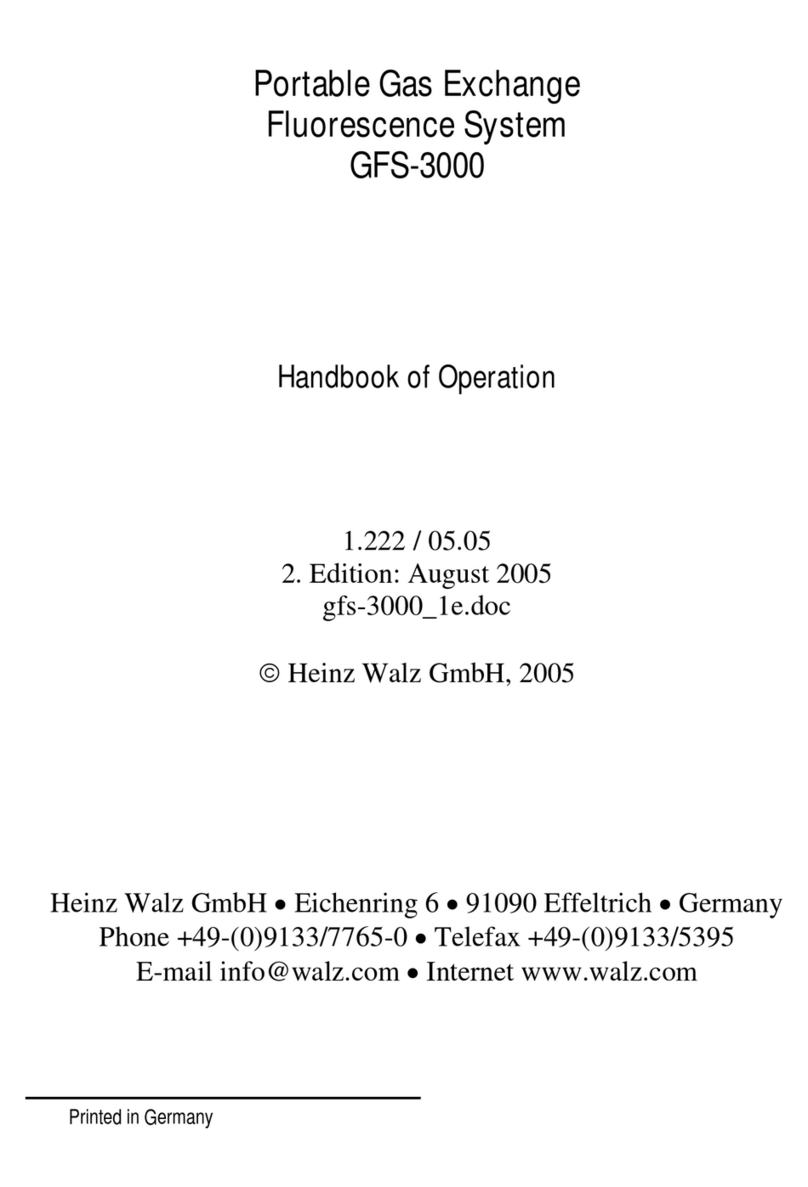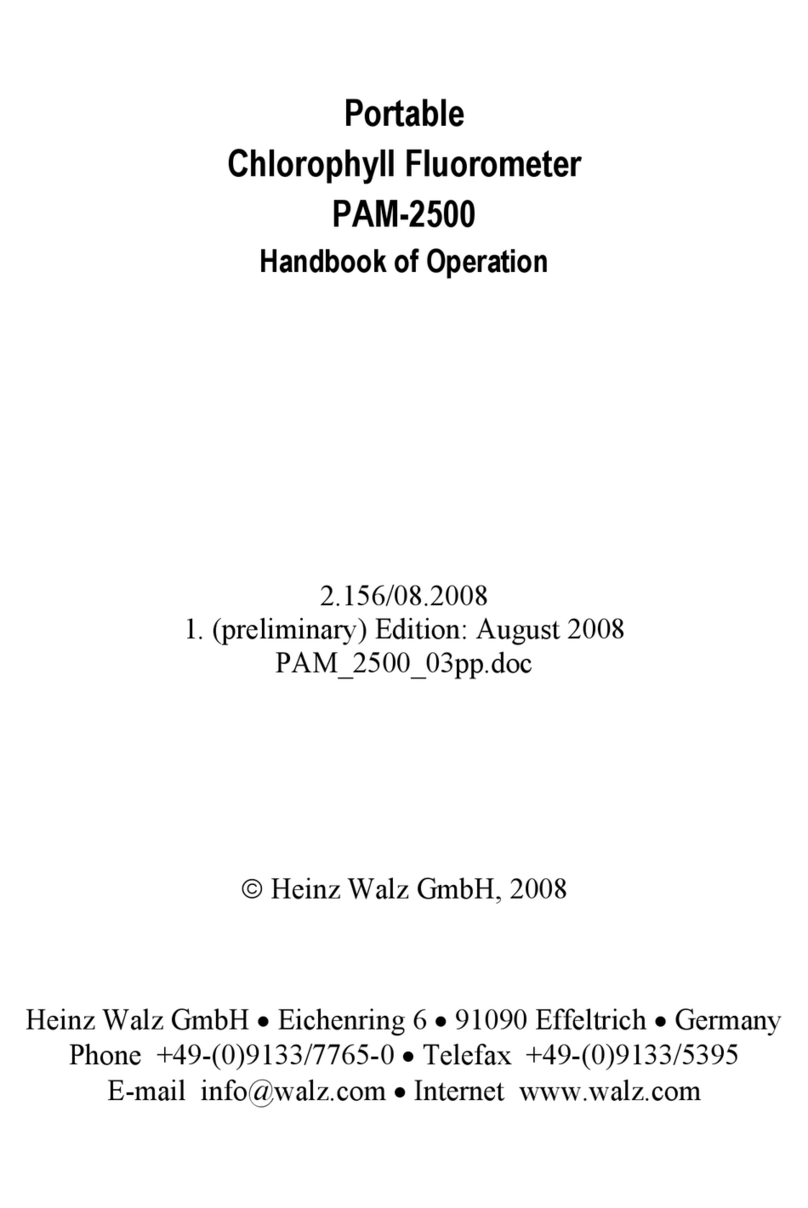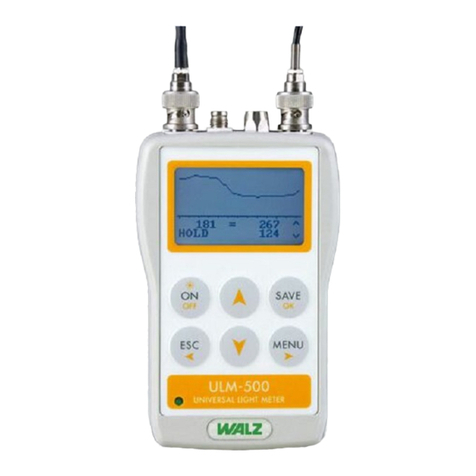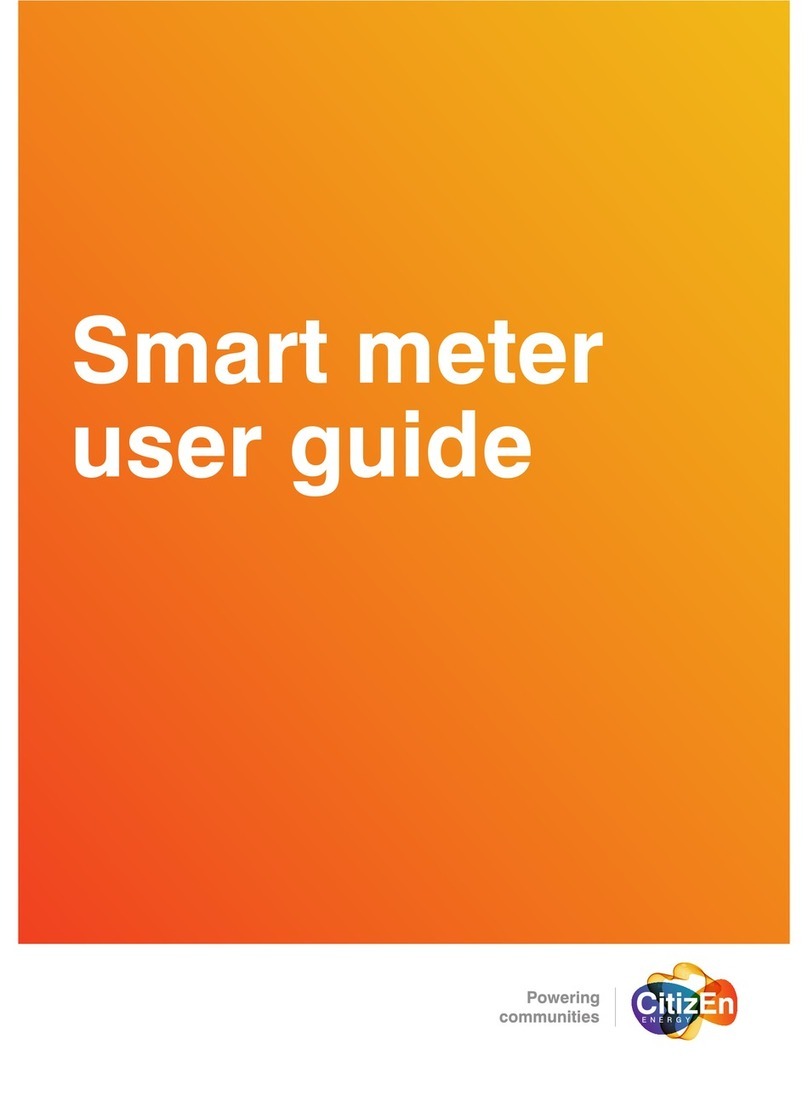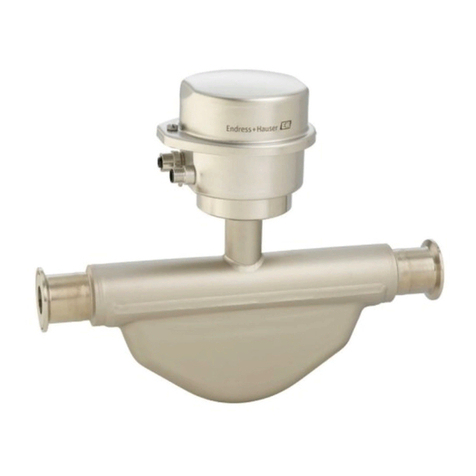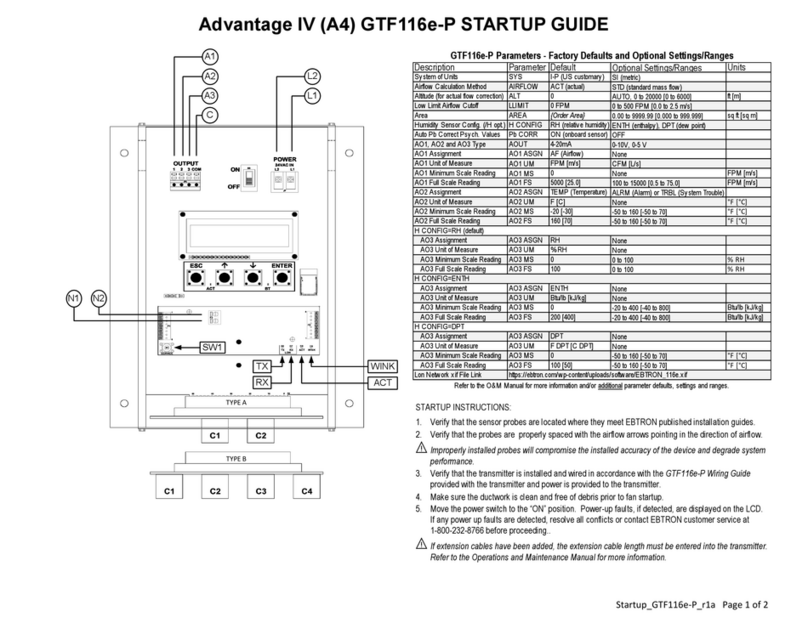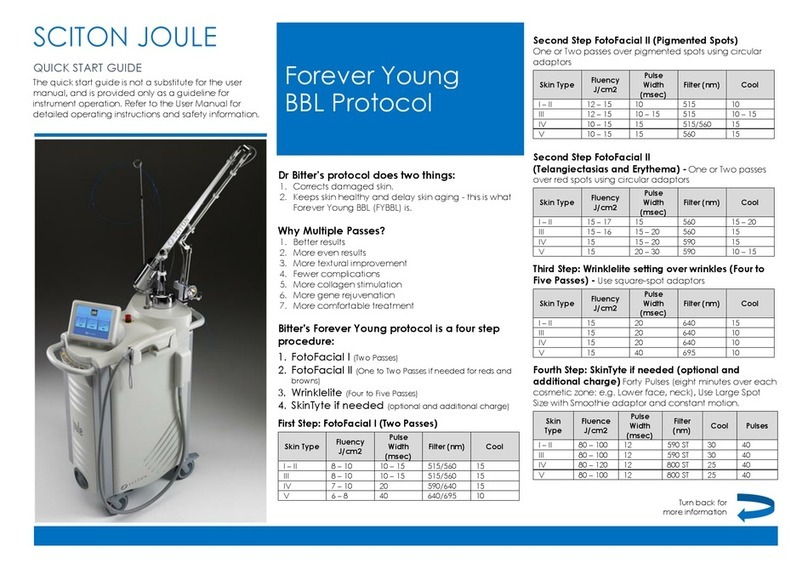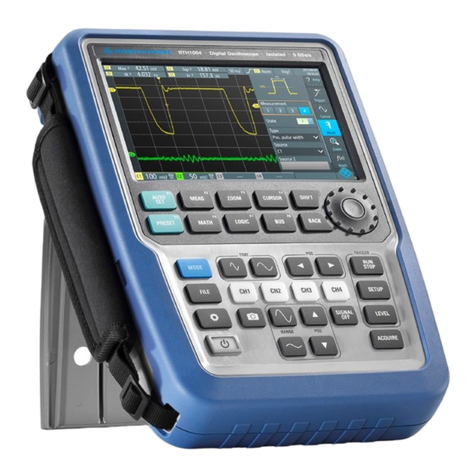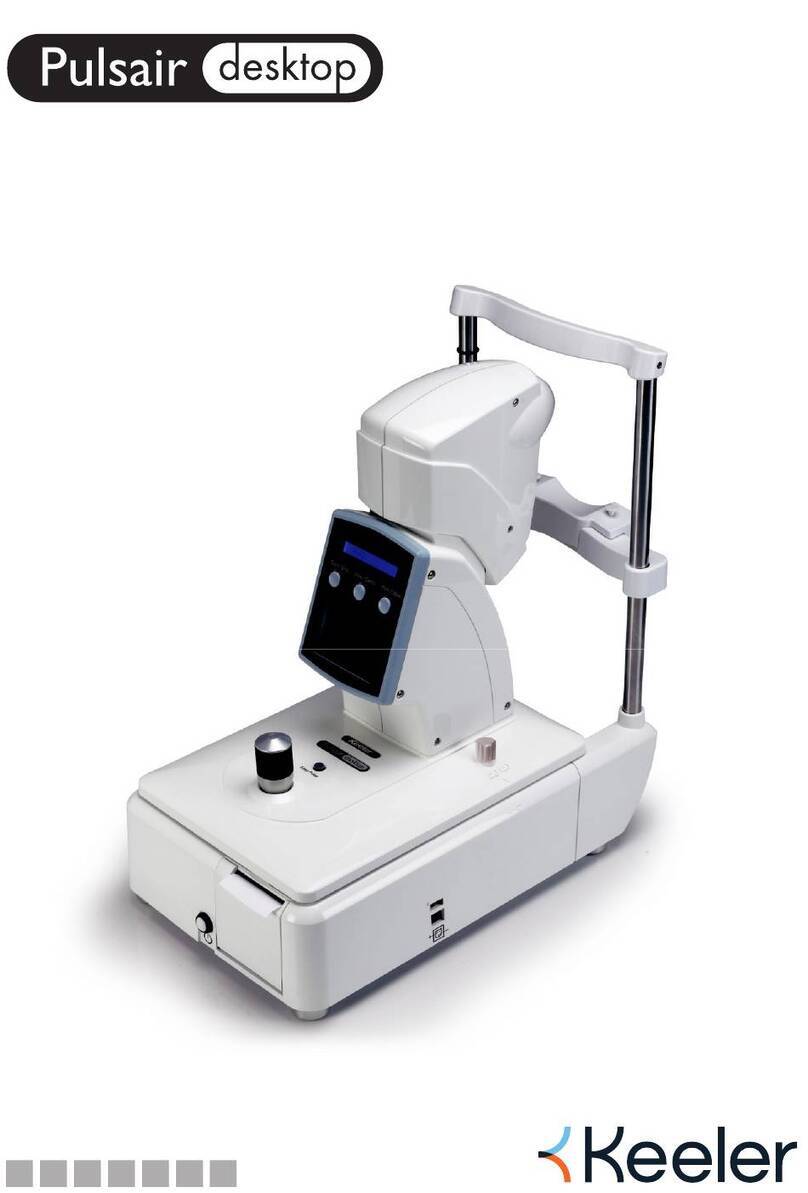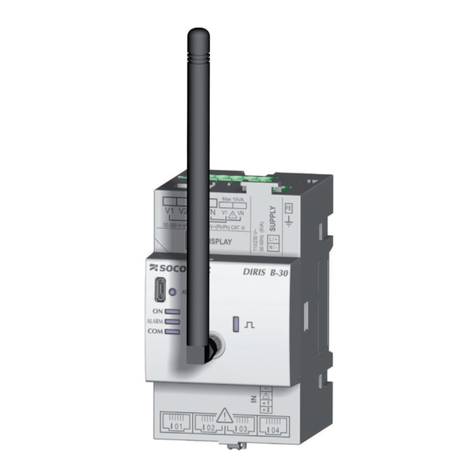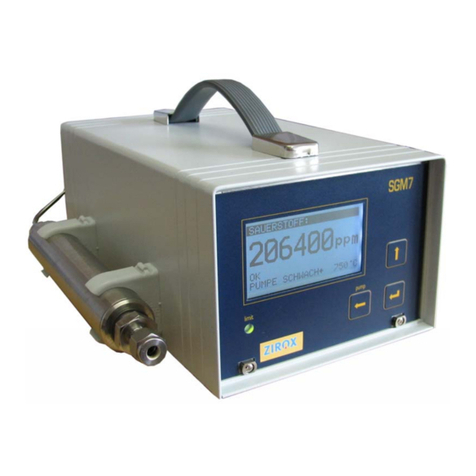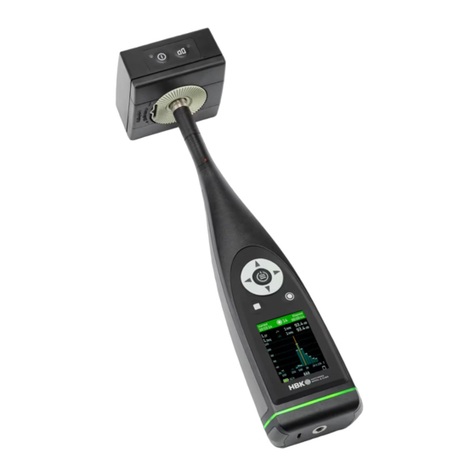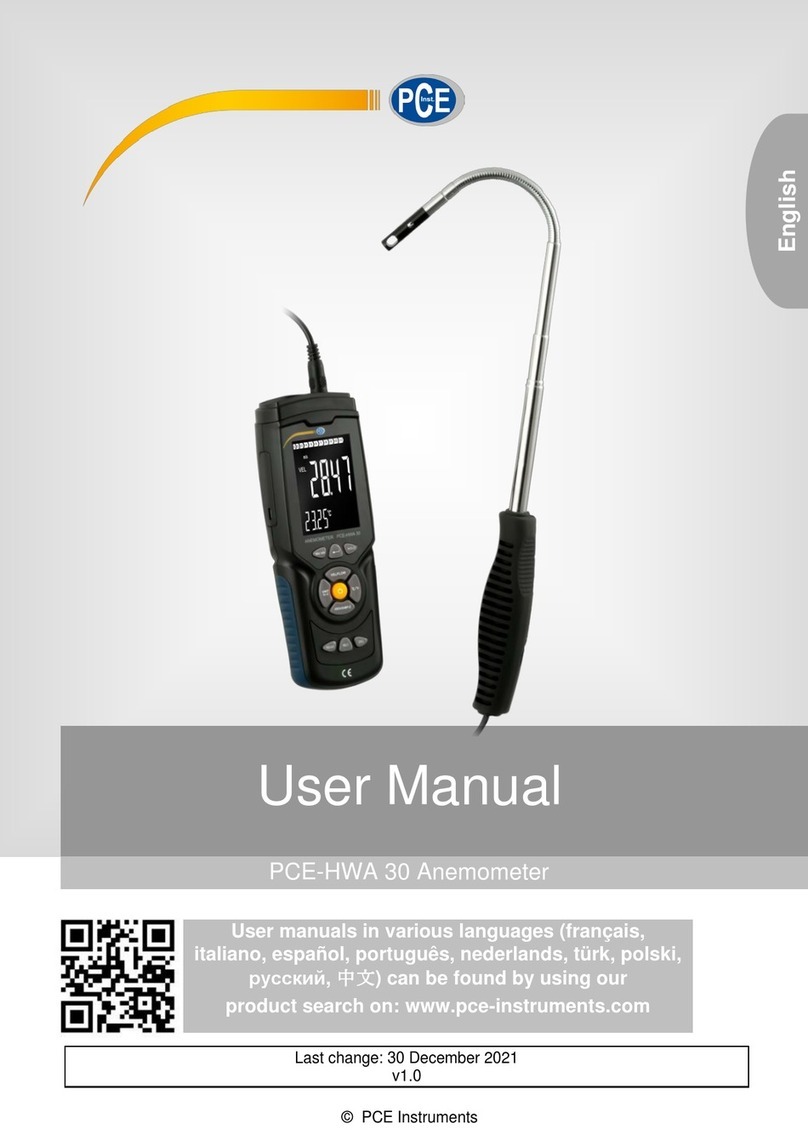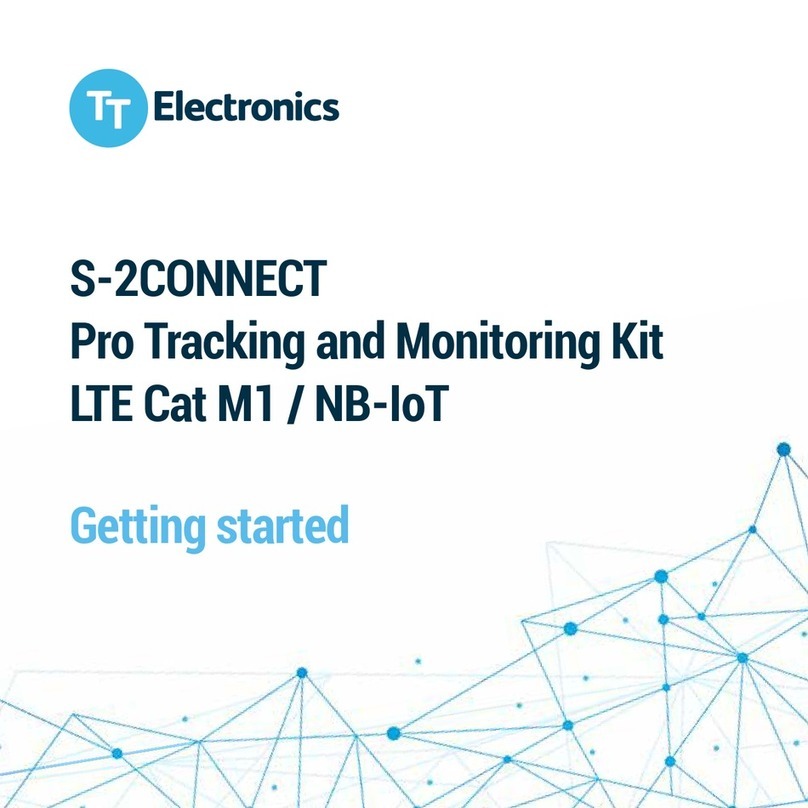Heinz Walz IMAGING-PAM User manual

Printed in Germany
IMAGING-PAM
M-series
Chlorophyll Fluorometer
Instrument Description
and
Information for Users
2.152 / 07.06
5. revised Edition: March 2014
imag-m-series0e_3.doc
Heinz Walz GmbH, 2014
Heinz Walz GmbH Eichenring 6 91090 Effeltrich Germany
Phone +49-(0)9133/7765-0 Telefax +49-(0)9133/5395


CONTENTS
I
1Safety instructions ........................................................................ 1
1.1General safety instructions ....................................................... 1
1.2Special safety instructions........................................................ 2
2Introduction .................................................................................. 3
3Components of the IMAGING-PAM MAXI-version .................. 7
3.1Control Unit IMAG-CG........................................................... 9
3.2LED-Array Illumination Unit IMAG-MAX/L and IMAG-
MAX/LR ................................................................................ 11
3.3CCD Camera IMAG-K6 and objective K6-MAX.................. 15
3.4CCD Camera IMAG-K7 and objectives K7-MAX/Z and K7-
MAX/S ................................................................................... 17
3.5Mounting Stand with Eye Protection IMAG-MAX/GS......... 19
3.6Leaf Distance Holder IMAG-MAX/B ...................................24
3.7Notebook PC IMAG-PC ........................................................ 25
3.8Adapter IMAG-MAX/GWK .................................................. 26
4Components of the IMAGING-PAM MINI-version.................. 27
4.1Multi Control Unit IMAG-CG ............................................... 27
4.2MINI-Head LED-Array IMAG-MIN/B and IMAG-MIN/R.. 28
4.3CCD Camera IMAG-K6 or IMAG-K7 .................................. 30
4.4IMAG-MIN/GFP with IMAG-K6..........................................32
4.5Leaf Holder IMAG-MIN/BK with Grip Holder..................... 38
4.6Adapter for GFS-3000 (IMAG-MIN/GFS)............................ 42
4.7ImagingWin software versions for various types of MINI-
Version ................................................................................... 44
5Components of the IMAGING-PAM MICROSCOPY-version. 46
5.1Multi Control Unit IMAG-CG ............................................... 47
5.2CCD Camera IMAG-K6 ........................................................ 47
5.3Axio ScopeA.1 Epifluorescence Microscope......................... 49
5.3.1Reflector Modules.............................................................. 51

CONTENTS
II
5.3.2Assembling of beam splitter and filters.............................. 52
5.3.3Mounting of the reflector module ......................................54
5.4LED Modules ......................................................................... 56
5.4.1Adjustment of brightness by grey filters............................ 56
5.4.2Integration of LED modules into Axio Scope.A1.............. 58
5.4.3Connecting LED modules with IMAG-CG ....................... 60
5.4.4Switching LED modules for measurements....................... 60
5.4.5IMAG-RGB ....................................................................... 60
6How to get started ......................................................................63
6.1Connecting the cables ............................................................ 63
6.2Software installation............................................................... 64
6.2.1Installation and Starting of ImagingWin............................ 64
6.2.2Installation of camera driver .............................................. 66
6.3First steps and examples of routine measurements ................ 66
7ImagingWin................................................................................ 81
8IMAGINGWIN - System Operation ..........................................83
8.1Definition of New Record ...................................................... 83
8.1.1Fo, Fm ................................................................................ 83
8.1.2New Record........................................................................ 84
8.1.3Measure.............................................................................. 84
8.2Functions applying to the View-mode ................................... 85
8.3Light controls ......................................................................... 87
9IMAGINGWIN - Register Cards ............................................... 90
9.1Image-window........................................................................ 90
9.1.1Different types of images ................................................... 90
9.1.1.1Current fluorescence yield, Ft........................................ 91
9.1.1.2Dark fluorescence yield, Fo ........................................... 91
9.1.1.3Fluorescence yield, F ..................................................... 92

CONTENTS
III
9.1.1.4Maximal fluorescence yield, Fm.................................... 92
9.1.1.5Maximum fluorescence yield, Fm'................................. 93
9.1.1.6Maximal PS II quantum yield, Fv/Fm ........................... 93
9.1.1.7Effective PS II quantum yield, Y(II).............................. 94
9.1.1.8Quantum yield of regulated energy dissipation, Y(NPQ)95
9.1.1.9Quantum yield of nonregulated energy dissipation,
Y(NO) ............................................................................ 96
9.1.1.10Absorptivity, Abs........................................................... 97
9.1.1.11Apparent rate of photosynthesis, PS/50 ......................... 99
9.1.1.12NIR light remission, NIR............................................. 100
9.1.1.13Nonphotochemical quenching, NPQ/4 ........................ 101
9.1.1.14Red light remission, R.................................................. 102
9.1.1.15Coefficient of nonphotochemical quenching, qN ........ 103
9.1.1.16Coefficient of photochemical quenching, qP............... 104
9.1.1.17Coefficient of photochemical quenching, qL............... 105
9.1.1.18Inhibition, Inh. ............................................................. 106
9.1.2Image capture and analysis .............................................. 107
9.1.2.1Measure Abs. ............................................................... 107
9.1.2.2Area of Interest, AOI ................................................... 108
9.1.2.3Select: Fluorescence or Live Video ............................. 110
9.1.2.4Zoom............................................................................ 112
9.1.2.5Cursor........................................................................... 113
9.1.2.6Analysis ....................................................................... 113
9.2Kinetics window................................................................... 116
9.3Light Curve window ............................................................122
9.4Report window ..................................................................... 128
9.5Settings window ................................................................... 132
9.5.1Light parameters .............................................................. 133

CONTENTS
IV
9.5.2Gain and Damping ........................................................... 136
9.5.3Absorptivity ..................................................................... 137
9.5.4Slow Induction parameters............................................... 138
9.5.5Image Correction.............................................................. 138
9.5.6Image Transformation...................................................... 141
9.5.7Battery.............................................................................. 141
9.5.8Display parameters........................................................... 142
9.5.9Go Speed .......................................................................... 144
9.5.10PS Limit ........................................................................... 144
9.5.11Inh. Ref. AOI ................................................................... 145
9.5.12Yield Filter ....................................................................... 145
9.5.13Fm Factor ......................................................................... 146
9.5.14F Factor ............................................................................ 149
9.5.15Reset Default Settings, Open or Save User Settings........ 152
9.6High Sens. window .............................................................. 153
9.6.1Special SP-Routine .......................................................... 154
9.6.2Fo Averaging.................................................................... 156
9.6.3Fv/Fm Contrast Enhancement by Background Suppression156
9.7RGB-Fit window.................................................................. 157
9.7.1RGB Gain......................................................................... 160
9.7.2Fit Correction ................................................................... 160
10IMAGINGWIN - Menu Bar..................................................... 163
10.1File ....................................................................................... 163
10.1.1Transfer FoFm.................................................................. 163
10.1.2Using Skript files - Load Script/Run Script ..................... 163
10.1.3Exit................................................................................... 171
10.2Options ................................................................................. 172
10.2.1Ruler................................................................................. 172

CONTENTS
V
10.2.2Scale ................................................................................. 172
10.2.3Info Icons ......................................................................... 173
10.2.4Mean over AOI ................................................................ 173
10.2.5Define AOI-array geometry ............................................. 175
10.2.6Create AOI array:............................................................. 176
10.3Al-List .................................................................................. 178
10.3.1LED currents / PAR values .............................................. 178
10.3.2Light Calibration .............................................................. 180
10.4Recalc................................................................................... 181
10.5Transect ................................................................................ 182
11List of key commands .............................................................. 185
12Technical specifications ........................................................... 186
12.1Components used in all Versions ......................................... 186
12.1.1Control Unit IMAG-CG................................................... 186
12.1.2IMAG-K7......................................................................... 187
12.1.3IMAG-K6......................................................................... 187
12.1.4Windows Software ImagingWin...................................... 187
12.1.5Battery Charger 2120-N................................................... 188
12.2Components specifically relating to Maxi-version .............. 189
12.2.1LED-Array Illumination Unit IMAG-MAX/L................. 189
12.2.2LED-Array Illumination Unit IMAG-MAX/LR .............. 190
12.2.3Optional filter plate IMAG-MAX/F (only for IMAG-
MAX/L!) .......................................................................... 191
12.2.4External 300 W Power Supply......................................... 191
12.2.5K7-MAX/Z....................................................................... 191
12.2.6K7-MAX/S....................................................................... 192
12.2.7K6-MAX .......................................................................... 192
12.2.8K6-MAX/M and K7-MAX/M.......................................... 193

CONTENTS
VI
12.2.9Mounting Stand with Eye Protection IMAG-MAX/GS... 193
12.2.10IMAG-MAX/B.............................................................. 194
12.2.11ST-101........................................................................... 194
12.2.12Transport Box IMAG-MAX/T...................................... 194
12.2.13IMAG-MAX/GWK1..................................................... 195
12.3Components specifically relating to MINI-version.............. 195
12.3.1IMAG-MIN/B .................................................................. 195
12.3.2IMAG-MIN/R .................................................................. 196
12.3.3IMAG-MIN/GFP ............................................................. 196
12.3.4K7-MIN............................................................................ 197
12.3.5K6-MIN............................................................................ 197
12.3.6K6-MIN/FS ...................................................................... 197
12.3.7K7-MIN/M and K6-MIN/M............................................. 198
12.3.8IMAG-S ........................................................................... 198
12.3.9IMAG-MIN/ST ................................................................ 198
12.3.10ST-1010......................................................................... 199
12.3.11IMAG-MIN/BK ............................................................ 199
12.3.12IMAG-MIN/GFS .......................................................... 199
12.4Components specifically relating to MICROSCOPY-versions199
12.4.1IMAG-AXIOSCOPE ....................................................... 199
12.4.2IMAG-L470M.................................................................. 200
12.4.3IMAG-L625M.................................................................. 200
12.4.4IMAG-RGB ..................................................................... 200
12.4.5IMAG-AX-REF ............................................................... 201
13Warranty................................................................................... 202
13.1Conditions ............................................................................ 202
13.2Instructions to obtain Warranty Service,.............................. 203

CHAPTER 1 SAFETY INSTRUCTIONS
1
1Safety instructions
1.1 General safety instructions
1. Read the safety instructions and the operating instructions first.
2. Pay attention to all the safety warnings.
3. Keep the device away from water or high moisture areas.
4. Keep the device away from dust, sand and dirt.
5. Always ensure there is sufficient ventilation.
6. Do not put the device anywhere near sources of heat.
7. Connect the device only to the power source indicated in the
operating instructions or on the device.
8. Clean the device only according to the manufacturer’s
recommendations.
9. If the device is not in use, remove the mains plug from the
socket.
10. Ensure that no liquids or other foreign bodies can find their way
inside the device.
11. The device should only be repaired by qualified personnel.

CHAPTER 1 SAFETY INSTRUCTIONS
2
1.2 Special safety instructions
The IMAGING-PAM is a highly sensitive research instrument
which should be used only for research purposes, as specified in this
manual. Please follow the instructions of this manual in order to
avoid potential harm to the user and damage to the instrument.
Never use the Multi Control Unit IMAG-CG with more than one
Measuring Head plugged in at the same time.
The IMAGING-PAM employs strong blue light for excitation of
chlorophyll fluorescence, for driving photosynthetic electron
transport and for transient saturation of photosynthetic energy
conversion (Saturation Pulse method). In order to avoid harm to your
eyes, please avoid looking directly into this light, particularly during
Saturation Pulses.

CHAPTER 2 INTRODUCTION
3
2Introduction
The IMAGING-PAM Chlorophyll Fluorometer is specialized for the
study of two-dimensional heterogeneities of photosynthetic activity.
The Imaging-PAM M-series covers a wide range of applications.
Large scale samples with areas exceeding multiwell plate format can
be imaged as well as microscopically small samples at the level of
single cells. MAXI-, MINI- and MICROSCOPY-versions have been
issued that are operated with the same Multi Control Unit IMAG-
CG. Like all PAM fluorometers, the Imaging-PAM applies pulse-
amplitude-modulated measuring light for assessment of chlorophyll
fluorescence yield. The same LEDs not only serve for generation of
the pulse-modulated measuring light, but also for actinic illumination
driving photosynthesis and for Saturation Pulses transiently
saturating energy conversion at Photosystem II (PS II) reaction
centers. The Saturation Pulse method provides a non-destructive
means of analyzing the photosynthetic performance of plants. It
allows to assess the quantum yield of energy conversion at PS II
reaction centers, which is affected by numerous intrinsic and
environmental parameters, like the physiological health, light
conditions and various stress factors. Since the introduction of PAM
fluorometry in 1985, a large amount of literature has been published
on the practical use of this method in many fields of plant science. In
principle, with all IMAGING-PAM Fluorometers the same kind of
measurements are possible as with Standard-PAM Fluorometers (e.g.
Dual-PAM, PAM-2500 or MINI-PAMII), most users already may be
accustomed to. Hence, also with all versions of the IMAGING-PAM
M-series the characteristic fluorescence levels Fo, Fm and Fm' can
be assessed and quenching coefficients derived. Also the PS II
quantum yield Fv/Fm (or F/Fm') can be determined and Induction
Curves as well as Light Saturation Curves with quenching analysis
can be measured.

CHAPTER 2 INTRODUCTION
4
The most essential new information provided by chlorophyll
fluorescence imaging relates to the detection of lateral
heterogeneities of fluorescence parameters which reflect
physiological heterogeneities. It has been known for some time, that
even physiologically healthy leaves are "patchy" with respect to
stomatal opening. Furthermore, stress induced limitations, which
eventually will lead to damage, are not evenly distributed over the
whole leaf area. Fluorescence imaging may serve as a convenient
tool for early detection of such stress induced damage. Hence,
favorite fields of application of fluorescence imaging are plant stress
physiology and plant pathology. An outstanding feature of the
Imaging-PAM distinguishing it from standard PAM fluorometers is
the possibility of parallel assessment of several samples under
identical conditions. For this applications the MAXI-version is
particularly well suited, e.g. for the screening of mutants in plant
molecular biology and for the assessment of samples in multi-well
plates, e.g. 96-well plates in ecotoxicological studies. The MINI-
version is particularly compact and easy to handle and therefore best
suited for field applications. MINI- and MAXI-versions can also be
readily adapted for simultaneous measurements with the GFS-3000
Gas Exchange Measuring System. The MICROSCOPY-versions
provide the opportunity of imaging heterogeneities at the level of
single cells (e.g. guard-cells or algae cells). Using the RGB-Head it
is even possible to differentiate between different pigment types, like
diatoms, chlorophytes and cyanobacteria.
The MAXI- and MINI-versions not only measure fluorescence,
but also provides an estimate of incident light absorptivity. This
aspect is particularly important when dealing with lateral
heterogeneities of chlorophyll content often accompanying stress- or
pathogen-induced damage. For assessment of absorptivity of the
incident photosynthetically active radiation (PAR), the same sample
is irradiated with diffuse near-infrared (NIR) and red light, the

CHAPTER 2 INTRODUCTION
5
remitted parts of which are imaged with the same CCD-camera
which serves for fluorescence imaging.
As the different versions of the Imaging-PAM M-series are
optimized for largely different sample sizes, they apply quite
different LED sources. While the same methodology applies for all
versions, there are very different power requirements for appropriate
intensities of measuring, actinic and saturation pulse light. The
MAXI-IMAGING-PAM is equipped with an extremely powerful
array of 44 high power (3 W) Luxeon LEDs, each of which is driven
with currents up to 1.6 A. The same type of LEDs is also used in the
MINI-IMAGING-PAM (featuring 12 LEDs illuminating 24 x 32 mm
area) and various versions of the MICROSCOPY-IMAGING-PAM
(with a single LED coupled in various ways to the excitation port of
various types of Epifluorescence Microscopes). Therefore, the same
Power-and-Control Unit (IMAG-CG) can be used for these different
measuring heads.. The new IMAG-CG also features an output for
controlling a special RGB-LED-Lamp that is equipped with its own
LED drivers.
As the various versions of the Imaging-PAM M-series put
different demands on the sensitivity, different CCD-cameras are
employed. Two different CCD-cameras are available for the MAXI-
and MINI-version. For high sensitivity applications (e.g.
phytotoxicity bioassay using multiwell plate with algae suspensions)
a 2/3" CCD camera (1392x1040 pixel with 4-pixel-binning) is
recommended, which is also generally used with the
MICROSCOPY-versions. For standard applications an economical
1/2" CCD camera (640x480 pixel) is available, which is particularly
useful in conjunction with a powerful zoom objective.
This manual provides some essential information on the
components of the different versions of the Imaging-PAM M-series

CHAPTER 2 INTRODUCTION
6
and on the ImagingWin software. While the latter in principle applies
to all versions, it also offers some special features that can be used
with particular versions only (e.g. RGB-Fit images using the
MICROSCOPY/RGB-version). As it is most frequently used and
also featuring the widest range of applications/configurations, there
is some emphasis on the MAXI-version in this manual.

CHAPTER 3 COMPONENTS OF THE MAXI-VERSION
7
3Components of the IMAGING-PAM MAXI-
version
In the following chapters the three different versions: the MAXI-,
MINI- and Microscopy-version of the Imaging-PAM M-series are
described. As the MAXI-version is most frequently used, those
components that are common to all versions are dealt with in this
chapter on the MAXI-version.
The basic measuring system of the MAXI-IMAGING-PAM consists
of:
1) Control Unit IMAG-CG with Battery Charger 2120-N and
External 300 W Power Supply
2) LED-Array Illumination Units IMAG-MAX/L (blue) or IMAG-
MAX/LR (red). A useful accessory for measurements with IMAG-
MAX/L investigating mirroring samples (like multiwell plates filled
with algae suspensions) is the Filter Plate IMAG-MAX/F, which
absorbs the small fraction of red light contained in the blue LED
light.
3) CCD Cameras IMAG-K7 or IMAG-K6 with accessories and
mounting sets
4) Mounting Stand with Eye Protection IMAG-MAX/GS,
laboratory stand ST-101 or Leaf Distance Holder IMAG-MAX/B
5) PC with ImagingWin-software
Combining imaging and gas exchange measurements, the adapter
IMAG-MAX/GWK for gas exchange chamber GWK1 is available.

CHAPTER 3 COMPONENTS OF THE MAXI-VERSION
8
Fig. 1: Transport Box IMAG MAX/T provided with each of the basic
Imaging systems offers enough space for all essential components
(except PC)
For transport of components 1 - 4, as well as of all essential
cables, the Transport Box IMAG-MAX/T is provided.
Note:
In the LED-Array Illumination Unit an
Adapter Ring may be inserted (not
screwed). To avoid damage to the
instrument, please do not take it out of the
box by using this hole as a handle.

CHAPTER 3 COMPONENTS OF THE MAXI-VERSION
9
3.1 Control Unit IMAG-CG
The Control Unit IMAG-CG contains a rechargeable Li-ion
battery (14.4 V/6 Ah). The main printed circuit board of the IMAG-
CG contains a RISC processor microcontroller, the power supply for
the CCD camera and the LED drivers for the Maxi-LED-Arrays. The
same LED drivers also serve for the alternative MINI- or
MICROSCOPY-Heads (MINI- and RGB-sockets at the backside of
the instrument). The Control Unit provides the power for driving the
LED-Arrays of all members of the M-Series systems except the
MAXI-IMAGING-PAM, which is driven by an external 300 W
Power Supply.
Note: Never switch on the Control Unit IMAG-CG with more
than one Measuring Head connected at the same time.
The functional elements at the front side of the instrument are:
POWER Power on/off switch; when switched on, the green
status LED at the right hand side of the switch
lights up.
Fig. 2: Front and rear side views of the Control Unit IMAG-CG

CHAPTER 3 COMPONENTS OF THE MAXI-VERSION
10
CHARGE-LED Charge LED lights up red while battery is charging
with the help of the Battery Charger 2120-N. When
the battery is fully charged, the LED lights up
green.
CHARGE Socket for connecting Battery Charger 2120-N. An
external 12 V battery cannot recharge the internal
14.4 V Li-ion battery.
Note: Please avoid charging the internal Li-ion battery while the
IMAGING-PAM is switched on.
MAXI-HEAD Socket for connecting LED-Array Illumination Unit
IMAG-MAX/L (MAXI-Head).
CAMERA Socket for camera cable via which trigger signals
and power is transferred to the CCD-camera of the
MAXI-Head or MICROSCOPY-IMAGING-PAM.
At the rear side of the housing, the Control Unit features three
sockets, which apply for use of alternative Measuring-Heads:
MINI-HEAD Socket for connecting MINI- Heads as well as the
IMAG-L470M or IMAG-L625M LED lamps of
the MICROSCOPY-version
RGB-HEAD Socket for connecting the optional Red/Green/
Blue-Head of the MICROS-COPY-version
Ext. out Socket for connecting an optional external light
source
When using MINI-Head, the camera can directly be mounted on
the top of the Control Unit housing. For this purpose a wing-screw is
provided.

CHAPTER 3 COMPONENTS OF THE MAXI-VERSION
11
3.2 LED-Array Illumination Unit IMAG-MAX/L and IMAG-
MAX/LR
Fig. 3: Front view of IMAG MAX/L with objective lens of CCD-camera
protruding through central opening
The LED-Array Illumination Unit IMAG-MAX/L features 44
high-power royal-blue (450 nm) LED-lamps equipped with
collimating optics, which are arranged for maximal intensity and
homogeneity at 17 - 20 cm distance to the object plane. These LED-
lamps provide the pulse-modulated blue excitation light and at the
same time serve for actinic illumination and Saturation Pulses. In
addition, there are 4 groups of 8 LEDs providing the pulse
modulated light for assessment of PAR-Absorptivity (see 9.1.1.10).
These LEDs are arranged in pairs, with each pair featuring a red
(660 nm) and a near-infrared (780 nm) LED. The lenses of these
LEDs are removed in order to obtain homogenous illumination of the
sample. While only a relatively small amount of this light is remitted
from the sample to the CCD-camera, this is sufficient to give good
signals, as both wavelengths can pass the red long-pass filter in front
of the CCD-chip, in contrast to the blue excitation light.

CHAPTER 3 COMPONENTS OF THE MAXI-VERSION
12
A useful accessory for measurements with mirroring samples
(like multiwell plates filled with algae suspensions) is the Filter Plate
IMAG-MAX/F that absorbs the small fraction of red light contained
in the blue LED light. This plate can be mounted with 4 screws at the
front side of the Illumination Unit. Unavoidably, the effective PAR-
values are lowered by about 15% by the filtering.
Fig. 4: Mounting of IMAG-MAX/F. Four screws are provided with the
filter plate
The LED-Array Illumination Unit IMAG-MAX/LR has a
similar organization as IMAG-MAX/L but features 44 red (650 nm)
high-power LED-lamps and the four groups of red (660 nm) and a
near-infrared (780 nm) LEDs. The IMAG-MAX/LR includes the
filterplate IMAG-MAX/FR .
Both Illumination Units feature two cables, which connect to the
MAXI-HEAD socket at the front side of the Control Unit IMAG-CG
and to the external 300 W power supply.
Table of contents
Other Heinz Walz Measuring Instrument manuals
